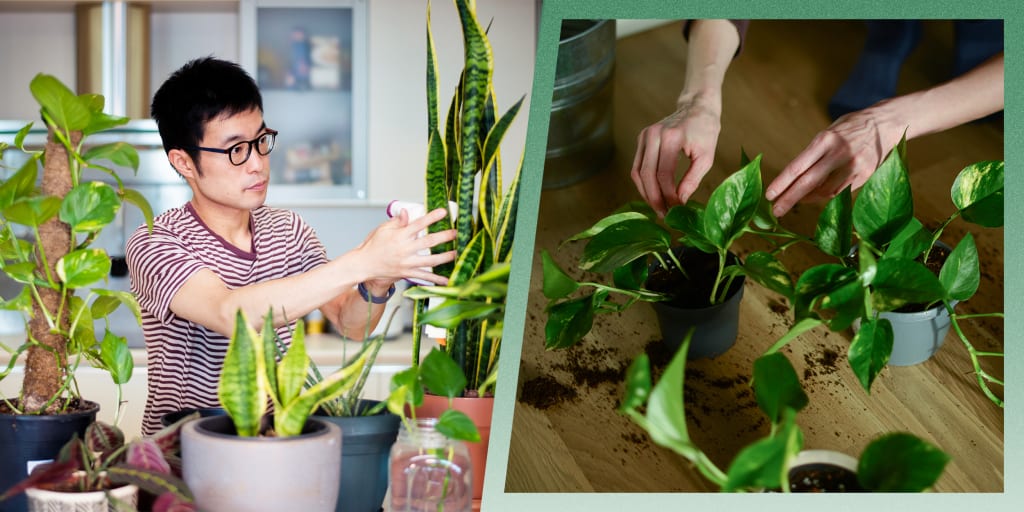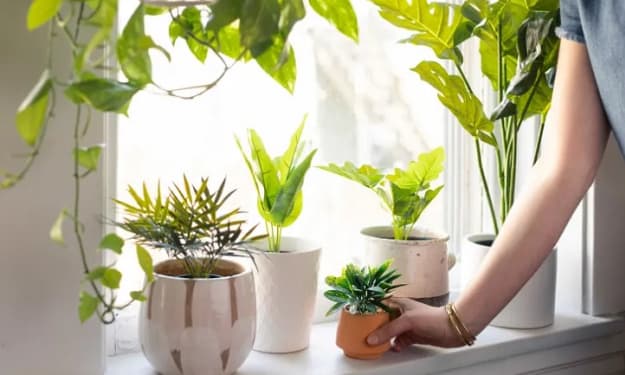The Ultimate Guide to Indoor Plant Care
The Ultimate Guide to Indoor Plant Care

The Ultimate Guide to Indoor Plant Care
Indoor plants are a wonderful addition to any home or office, providing beauty, tranquility, and even health benefits. However, taking care of indoor plants can sometimes be a challenge, especially for beginners. In this comprehensive guide, we will explore the essential aspects of indoor plant care, including choosing the right plants, providing optimal growing conditions, watering, fertilizing, and troubleshooting common problems. Whether you are a seasoned plant enthusiast or just starting your green journey, this guide will equip you with the knowledge and confidence to keep your indoor plants thriving.
Choosing the Right Indoor Plants
Selecting the appropriate indoor plants is crucial for successful care. Consider factors such as light levels, humidity, and available space. Some popular low-maintenance indoor plants include pothos, snake plants, and ZZ plants. If you have ample natural light, you may opt for plants that require brighter conditions, such as succulents or flowering plants. Research the specific needs of each plant before making a purchase to ensure compatibility with your environment.
Providing Optimal Growing Conditions (300 words)
a. Light: Most indoor plants require adequate light for photosynthesis. Place plants near windows or provide artificial lighting, ensuring they receive the appropriate amount of light based on their species.
b. Temperature and Humidity: Maintain suitable temperature and humidity levels according to the requirements of your plants. Most indoor plants thrive at temperatures between 65–75°F (18–24°C), with moderate humidity. Grouping plants together can increase humidity levels.
c. Air Circulation: Good air circulation is essential to prevent stagnant air and discourage pests and diseases. Use fans or open windows occasionally to promote airflow.
Watering Indoor Plants
a. Watering Frequency: The watering needs of indoor plants vary. Check the moisture level of the soil before watering. Stick your finger about an inch into the soil; if it feels dry, it's time to water. Overwatering is a common mistake, so ensure proper drainage to prevent root rot.
b. Watering Methods: Water plants thoroughly until water drains out of the pot's drainage holes. Avoid allowing plants to sit in standing water, as it can lead to root problems. Use room temperature water to prevent shocking the roots.
c. Humidity and Misting: Some plants benefit from increased humidity levels. Mist the leaves of plants that prefer higher humidity or place them on trays filled with water and pebbles to raise humidity levels around them.
Fertilizing Indoor Plants
a. Understanding Fertilizers: Indoor plants require periodic fertilization to replenish nutrients. Choose a balanced, water-soluble fertilizer formulated specifically for houseplants. Follow the instructions provided by the manufacturer for dosage and application frequency.
b. Application Tips: Apply fertilizer during the growing season, typically spring and summer, when plants are actively growing. Dilute the fertilizer to half the recommended strength to avoid overfertilization, which can harm plants. Water the soil before and after applying fertilizer to prevent burning the roots.
Troubleshooting Common Problems
a. Pests: Keep a close eye on your plants for signs of common pests like aphids, spider mites, and mealybugs. Use natural or chemical treatments to control infestations, depending on your preference and the severity of the problem.
b. Diseases: Overwatering, poor air circulation, or high humidity can lead to fungal or bacterial diseases. Remove affected leaves and adjust care practices to prevent further spread. Fungicides or neem oil may be used if necessary.
c. Pruning and Propagation: Regularly prune your plants to promote bushier growth and remove any dead or yellowing leaves. Many indoor plants can also be propagated through stem or leaf cuttings, allowing you to expand your plant collection.
Conclusion
Caring for indoor plants is a rewarding and fulfilling experience. By understanding the specific needs of your plants, providing optimal growing conditions, and addressing common issues promptly, you can ensure the health and longevity of your indoor green companions. Remember to observe your plants regularly, adjusting care practices as needed. With patience and attention to detail, your indoor plants will thrive, beautifying your space and bringing a touch of nature indoors.
About the Creator
Kavya Organic Garden
Passionate about home gardening, plant care, growth, and maintenance. Join me on this exciting journey of organic practices and sustainable gardening! 🌱






Comments
Kavya Organic Garden is not accepting comments at the moment
Want to show your support? Send them a one-off tip.